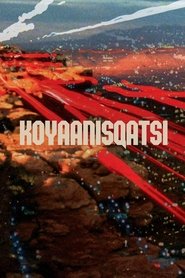Watched at the Benaroya Hall, Seattle, with the soundtrack performed live by the Philip Glass Ensemble.
Would make a great double bill with Michelangelo Antonioni's Red Desert (1964), which is equally fascinated and enthralled by the images of modern life, which complicates any surface-level readings of these films being entirely critical of what they depict.
Glass has said he thinks of his music for The Qatsi Trilogy as alternately “under the image,” “on top of the image,” and “next to the image.” He has added that his under/on top of/next to formulation could work for music either in the foreground or background. I would suggest that he is alluding to the degree of closeness with which his music is tied to the images (individually or in sequences). Sometimes Glass would compose the music and Reggio would edit to it; sometimes the two worked more closely together. But rarely does the music attempt, in any literal sense, to echo the images
— John Rockwell (Criterion)
An invitation to knee-jerk environmentalism of the most sentimental kind. It is all images and music. There is no overt message except the obvious one (the Grand Canyon is prettier than Manhattan). It has been hailed as a vast and sorrowful vision, but to what end? If the people in all those cars on all those expressways are indeed living crazy lives, their problem is not the expressway (which is all that makes life in L.A. manageable) but perhaps social facts such as unemployment, crime, racism, drug abuse and illiteracy — issues so complicated that a return to nature seems like an elitist joke at their expense.
Koyaanisqatsi is a slick, naive, chic, maddening, sometimes very beautiful movie that, if it were a book, would look great on a coffee table.
— Vincent Canby (New York Times, 1982)

